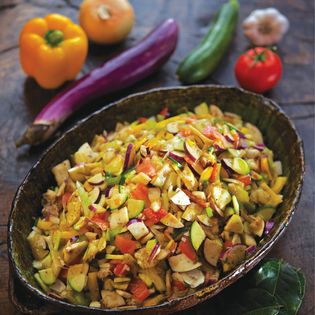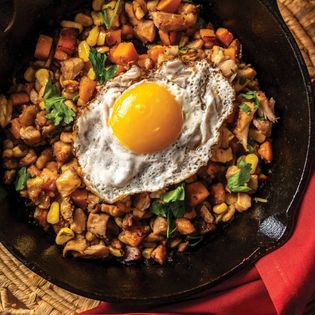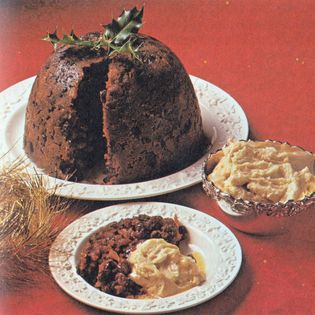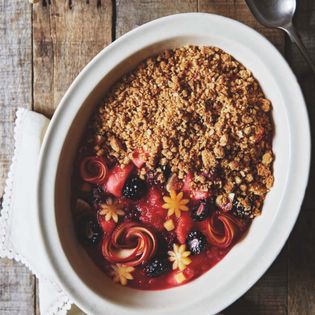
Advertisement

Cat Black
Food writer
https://www.redfern-gallery.com/artists/71-catherine-kurtz/Most popular
Cat's collections
The hearty one-pot comfort solution, a casserole. Here are six ways to win their hearts, and feed your soul.
When catering for a crowd there are always leftovers, as no one wants a stingy feast. But what to do with that cold turkey, the last slice of Christmas pudding. Look no further.
It is party season, you've a drink in hand, and you just need something to nibble alongside it. Here are some of the best things you could find in that bowl the youngest member of the assembled company has been tasked with passing around. Enjoy!
Giving gifts is central to the season, and there is no more heartfelt gift than one you have made yourself. What could be better? Made it delicious too!
Preparing a winter supper party, and want some ideas for a first course that will warm you up, without weighing you down and spoiling the main event? We have got you covered.
What is better than Thanksgiving dinner? The leftovers! Here are six ways to make the most of all those delicious things you made earlier.
The last Sunday before advent is the day when traditionally in the UK, families gather to prepare the Christmas pudding, giving it time to mature, ready for the big day. It's a perfect time also to make fruit cakes, mincemeat for mince pies, and all those good things that benefit from some time set aside, and a regular drizzle of brandy.
There is no better moment for a sweet comforting pudding than the fall. The kinds of fruit that are at their tender best after cooking are in season, and with dark evenings and temperatures dropping, a bit of sweetness is just what we need.
Sustainable, versatile, and delicious, don't overlook game!
Halloween and candy go hand in hand. Here are a sticky half dozen treats to sweeten up your spooky season,
Features & Stories

Cat's favorite cookbooks

The Joy of Cooking
I grew up with this bible of all possible recipes, it is no nonsense and has a recipe for everything. It works. I have never lived in a house without it, the page marking the temperature and measurement equivalents is permanently bookmarked. It is the first book I bought for my own house when I left home.

The Good Cook (series)
Jeremiah Tower, Carol Cutler, Richard Olney and Time-Life Books
This book has no one author, but the chief consultant was Richard Olney, a brilliant food writer. This entire series is an indispensable collection of advice and tempting recipes on each subject. The first books I bought, I saved for each and went to Books for Cooks filled with anticipation at each purchase. Grains, Pasta & Pulses, Eggs, and Fish & Shellfish are also all favourites.

Meat Course
One of my most used books, and one that I have turned to again and again for wisdom and ideas on how to cook every type of meat. As a vegetarian is has never let me down in my life of cooking for other people. And yes, I do taste the finished dishes and they are all delicious!

French Provincial Cooking
My mother, a young medical student, living alone in a bedsit in 60s London, taught herself to cook with Elizabeth David's books. My childhood was filled with the fruits of her efforts. My own kitchen could not be without those same loved dishes. I think my own love of pastry began with the quiche lorraine.

A Book of Middle Eastern Food
Again this is to do with my parents wonderful cooking when I was a child. It wasn't until I tried to cook myself that I realised how many of my favourite of my Mum's dishes originate here.

How To Eat: The Pleasures and Principles of Good Food
As a food writer Nigella writes as a food lover, with eloquence. I read How to Eat from cover to cover when I first got it. Forget the TV, I love the writer in her. And this, her first full length book, reads like the outpouring it is, her life up to that point, with all its passion and such a human quality. I also love How to be a Domestic Goddess, which is my most used home-baking book.

Marcella's Italian Kitchen
If I had to choose just one book on the glory that is Italian food it would be this. Comprehensive, great to read, and full of authority and fabulous recipes.

Jane Grigson's Fruit Book
Of all Jane Grigson's classic books this is the one I use most. I am a pastry chef at heart, and this is my starting point for whenever I set out for information or ideas, no matter what the fruit.

Ice Creams, Sorbets and Gelati: The Definitive Guide
Food historians and ice cream obsessives Caroline & Robin Weir's updated version of their book of 12 years previously is exactly what it says on the label, an ice cream book that has all the history, technical information and recipes you could possibly need. From the basics to the outlandish the recipes are a treasure trove.

Indian Cookery
I believe this was the first book to write about Indian food and detail the recipes for a European readership. With an English speaking mother of Indian blood, and a father eager to learn how to cook the food they both loved, this book was in much use in my house. I know that when I now make a biryani, dhal, or chapatis, the recipes I use likely originated here.
Advertisement










